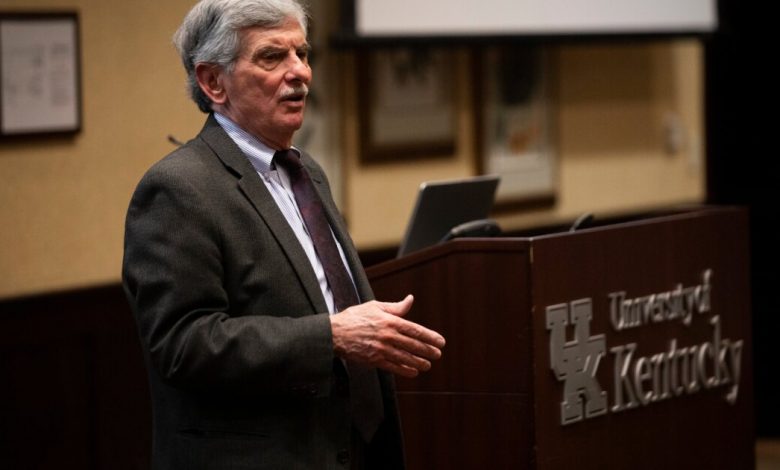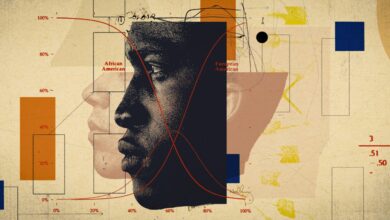What Higher Ed’s History Can Tell Us About the Present

[ad_1]
John R. Thelin, one of the best-known historians of American higher education, likes to pay attention to the detailed human stories that have happened over decades on college campuses. It’s a way, he says, to not only counter some of the blander official narratives promulgated by college presidents and others, but also to find a connection to major events in American history, reflected in the lives of students and other groups on campus.
Thelin will give his last academic lecture, a Zoom presentation scheduled for Thursday evening. A university research professor in higher education and public policy at the University of Kentucky, Thelin is one of the best-known scholars of colleges and universities. He is the author of Going to College in the Sixties, Essential Documents in the History of American Higher Education and A History of American Higher Education (Johns Hopkins University Press), now in its third edition, a book that shows that colleges have long struggled with the financial and cultural pressures commonly discussed today.
But for Thelin, the most compelling aspects of that history lie in the people on campus, and how campus life interacted with broader historical events off-campus. Thelin promises that his last lecture will be full of such stories: How the University of Chicago, for example, mothballed its football stadium after losing to Harvard, then later used the abandoned locker rooms as a secret location for the Manhattan Project. Or how female professors at the University of California at Berkeley climbed through a bathroom window to get into the all-male faculty club and participate in a faculty meeting. Or how Jesse Owens became a hero for representing the United States at 1936 Olympics in Nazi Germany, but the track star could not live on campus at Ohio State University, where he was a student.
Thelin is calling his last lecture “Academic Procession,” and he says it will combine his interest in college campuses and architecture with accounts of how professors, students, university presidents, and others created liveliness, culture, and lasting traditions at these iconic places, which also influenced society as a whole.
“The American campus is pretty spectacular,” Thelin says, “but it’s really just a stage set. Whatever great buildings and designs you have, until you have a script and cast, it’s inanimate.”
This interview has been edited for length and clarity.
Why did you pursue the history of higher education as a field of study?
I was a European-history major at Brown University, with a strong interest in the late Middle Ages, but I would gravitate toward topics about colleges and universities. I had a really good medieval-history professor who said, “Look, you don’t have the languages to go on to be a professor of medieval history, so for graduate school you should shift toward American history.” At Berkeley, where I got a master’s and doctorate, there was this concentration of higher-education scholars from a variety of fields, including a sociologist, Martin Trow, who was very influential. I got to work at a research center that was down the hall from Clark Kerr and his Carnegie Commission on Higher Education.
Just by chance, this convergence of scholars — economists, sociologists, historians, political scientists that were focusing on higher education — it was like being in a candy store. And what I liked about it is that I could always read in a variety of disciplines, going across boundaries, but always coming back to a historical base.
It’s interesting that you say you were attracted to the study of higher education because it has so many facets to it, when a common criticism of scholarship in higher ed is that it is so siloed.
To me, many of the really important issues in American history, in American society, at some point converge into higher ed. So that if you talk about upward mobility, at some point, it’s going to have some connection or disconnection with higher education.
At Harvard in 1910, only 60 percent of students would graduate.
Over the last number of years, there’s been this debate about why college costs so much. I thought, Well, if college costs so much today, was there a time when the price of going to college was bearable? I went back to about 1910 to look through budgets of about 10 different institutions — and I always do case studies, because I worry that generalizations over large trends gloss over important details. I found that even prestigious, historic places like Harvard, Yale, and Princeton had tuition charges that were so ridiculously low by the standard of the day. How the hell did these places balance their budgets? The thing that would startle most people is they offered their students very little in the way of services — they were just bare bones. They also gave very little in the way of scholarships, just these lean, mean operations. The other thing that surprised me, related to the low price and low cost, was how high their dropout rates were — at Harvard in 1910, only 60 percent of their students would graduate.
So what I try to do is take a present-day issue, and figure out how to connect it in some way with some earlier era. It’s a style of historical writing that is not necessarily appealing to mainline historians, but it’s more of an interdisciplinary way of looking at higher ed.
What would be the more preferred or conventional approach?
A lot of the doctoral programs in higher education will emphasize something like leadership. And I just instinctively recoil when someone mentions training for leadership. I like to complicate issues and questions rather than simplify them. That kind of interdisciplinary research about higher education tends to slow things down and is not going to provide easy answers.
There are a number of people who say that higher education is at a dangerous inflection point, that it hasn’t been innovative or adaptive enough, and that it’s in danger of becoming irrelevant. What do you think about that?
I don’t mean to dismiss or diminish that — I think the concern is legitimate — but you can find that same pronouncement or concern surfacing in just about every preceding decade by one group or another.
Before you judge, make sure you gain a sense of all the things that are going on at colleges, because a lot of times there are some very, very important innovations that are taking place that may or may not be capturing headlines. Let me give you an example: We all carry around notions of colleges of agriculture, and the land-grant legacy, and all that. What a lot of people don’t realize is that statistics as a serious field really came out of colleges of agriculture — in particular, at Iowa State University, there was this coincidence of the agricultural economist and then the university’s math department. They collaborated, and it was a field that lent itself to large databases. It became a prototype that would then be diffused to a whole range of other fields on that campus or at other campuses. So in some ways, it was a very unplanned and very quiet contribution, but it’s actually a very significant innovation.
There are certain things you really ought to know as an educated person and complete citizen.
Go back to March 2020 and think of how disastrous Covid and sequestering would have been had it taken place 15 years earlier. The fact that by hook or by crook, a lot of universities were able to continue some commitment to teaching and learning, with all its limits. But if colleges had been indifferent to the internet and all those related things from quite a bit before, they really would have been out to lunch.
And what do you think about the financial future and sustainability of colleges, and where do you have hope?
Hardly original to me is the view that the Covid disruptions did not create a lot of these crises, but they accelerated them. There are a number of issues and concerns that have been simmering for a long, long time, and some of them may actually come to a head. There are a substantial number of small underendowed private liberal-arts colleges in low-population areas that are probably very, very good colleges — but there’s going to be a shakeout.
One thing that I would hope would come out of these adversities and challenges within and across campuses is that more members of the academic community, leaders, trustees, and others, resume some discussion about a central question: What is the purpose of going to college? What is the mission of our institution?
Go back to a 1978 book like The Perpetual Dream, by Gerald Grant and David Riesman, about reform and experimentation in higher education. They were often naïve, often spoiled, but you had these college founders talking about the most essential issues. In recent decades, there has been this understandable preoccupation with preparing students for entry-level jobs. But what’s good about the uncertainty of the economy and the connection with higher education is that it might make colleges rethink what they are all about. My naïve hope would be that you get more conversations about education for citizenship, regardless of what your profession or your job is going to be. There are certain things you really ought to know as an educated person and complete citizen.
Across all professions, the payoff from a college education and graduate degrees is less certain. I had classmates in college who became lawyers in Washington, and they say that the big law firms are no longer offering many partnerships, and have moved more toward a gig economy. Or I’ve talked to some medical doctors who say, “I make a very good salary, but I’m essentially a salaried employee.” This kind of reshuffling of the professions is going to have some consequences, so graduate schools, professional schools, and undergraduate colleges may have to go back to some essential discussions.
[ad_2]
Source link






